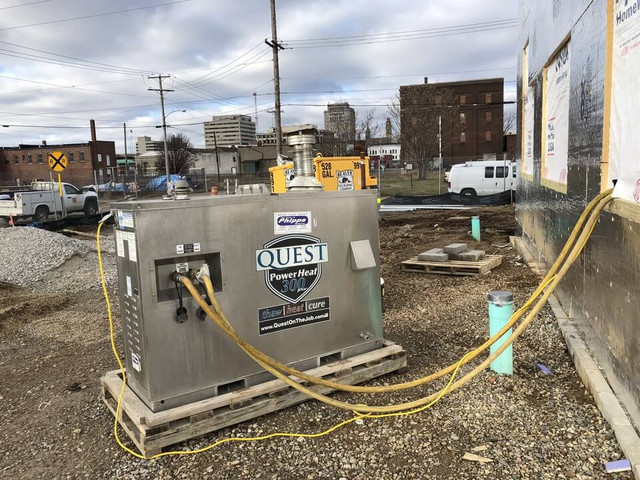Mid-Winter Evaluation: How’s Your Temporary Heat Doing?
Posted by Matt Milos on Jan 9th 2019
The new year offers contractors a time to step back and re-evaluate their production schedules and project costs. Many projects are quickly approaching completion. Others are already behind even if the contractor doesn't realize it yet.
I've attended far too many meetings with contractors facing unexpected delays and cost overruns. We've all been there: we run into problems because our focus on short-term savings made us ignore long-term value. This happens very often with temporary heat.

An inefficient temporary heat source can decimate a schedule and budget.
Traditional forms of heat like direct- and indirect-fired units have a very low upfront cost. That's what makes them so attractive, and using these sources makes fuel consumption easy to track.
The problem comes, however, when those fuel numbers get a bit hard to swallow. I hear the same things time and time again:
"We had no idea just how much fuel these things use."
"We blew through our entire winter fuel allowance in the first two months alone."
"These heaters were supposed to be cheaper!"
The bottom line: a low initial price simply doesn't compensate for low fuel-efficiency.

Traditional heat may seem cheap up-front but they quickly rack up high fuel costs.
But there's another, more difficult problem with these heat sources: moisture-related delays.

Without proper humidity mitigation your schedule will suffer.
The trouble with these delays is that by the time you recognize them it may already be too late. There are early warning signs: condensation on metal pan decks or windows, concrete that takes too long to finish, coatings and drywall that struggle to cure. Too often, however, the project is so far along it is difficult to change course. Now you are both over budget and behind schedule.
The good news? Neither of these problems are irreparable.
A hydronic climate control system is the solution to your moisture and fuel budget problems. With a self-regulating, recirculating system, it offers tremendous fuel savings that can quickly get your budget back on track. It also offers unbeatable moisture control. Unlike other systems that pump in gallons of water vapor per day, a hydronic system actually removes excess moisture. Drying the structure this way helps you make up for lost time by creating the ideal environment for fast curing and finishing.

By switching to hydronic heat it's possible to undo some of the damage of traditional systems.



